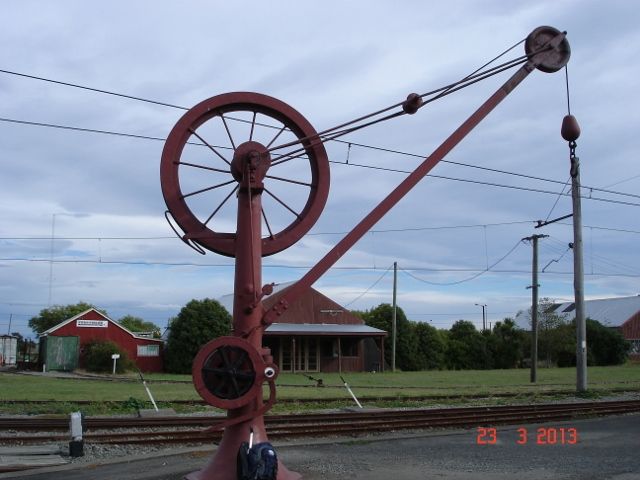Hello Eric,
I'm not the most accomplished model engineer and I think my models are 'workmanlike' rather than 'works of art', so my hope is that the choice of prototype and some information on how the design evolved is of interest.
As for the crane, Bazyle has it on the nail. I worked almost entirely from photographs and just measured a couple of key dimensions. For the jib, you'll see there are equally spaced cross-members, you onl have to measure one to work out all the dimensions up to the top. For many dimensions, I imported the pictures into Corel draw as bitrmaps and produced vector drawings over the top. I can correct the perspective of photos in photo-paint and draw allows me to scale them by +/- 0.1% so in essence much of it becomes a process of getting a full on view scaled to the right size and 'tracing' the part over the top.
When preparing the drawings I scale the units so all the measurements are in real-world inches. This is a great sense check as when everything is proportioned right, you usally find almost every larger measurement is a round number of inches or feet. Larger dimensions are rarely to fractions or to things like 7" or 11".
There are pictures of the model and the prototype in my albums, make your own judgement about the absolute accuracy. Although i revisited the crane at least twice for extra pictures and the odd measurement my aim was to capture the 'spirit' of it, not micron accuracy!
I used a similar approach for my 'deisel' shunter, hampered by the fact I could not revisit the original, although the web gave me pictures of some similar engines.
The mill engine Nordern was interesting, as there were dimensions and a drawing, but lots of missing information ,and no way (at least I thought no way when I was making it) of getting more data.
The two models I'm working on now, one is of an engine I've actually got full size in my workshop, so that's easy. The other is from an old engraving I scaled up and down (within obvious limits) until nearly all the dimensions came out as neat one-inch multiples.
Final thoughts, if looking at prototypes highlights anything, it's that crankshafts and valve rods may often be over-scale on models. Also, sometiomes the real thing has faults that would be upsetting to a judge if seen on a model!
Neil
Stewart Hart.





